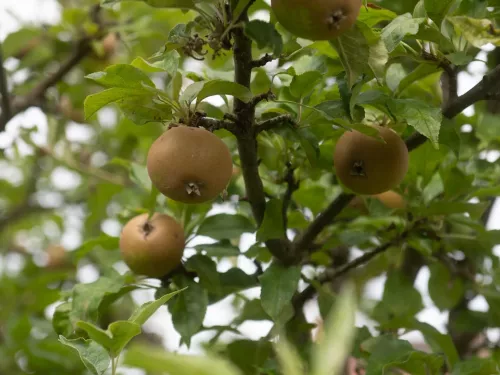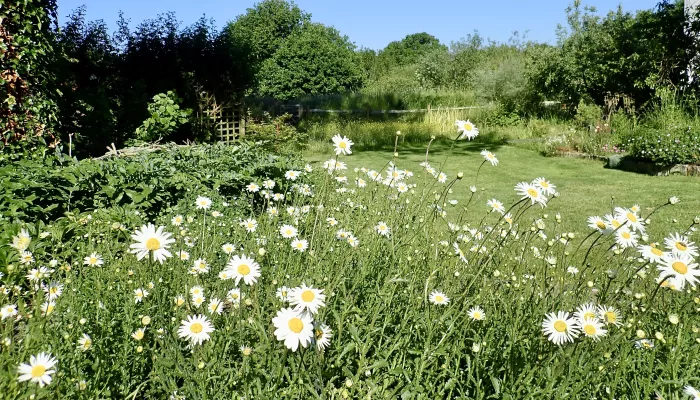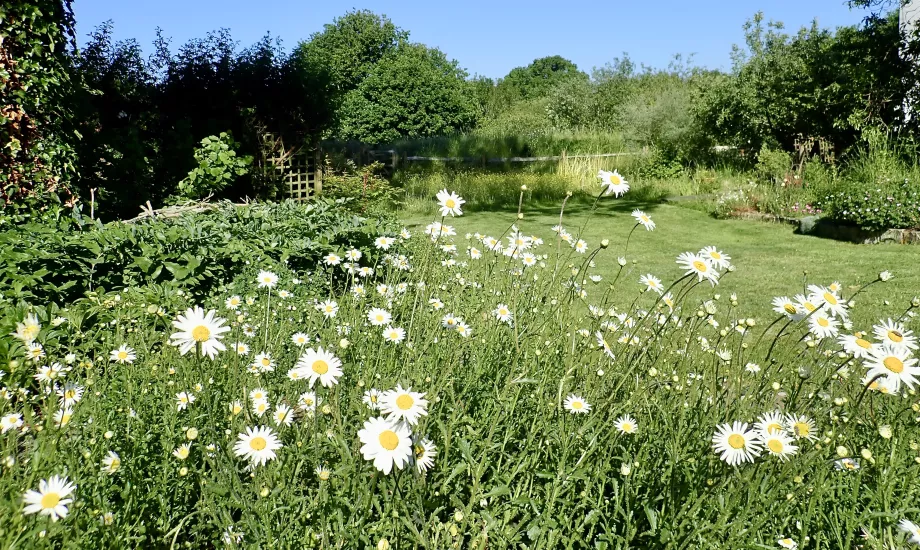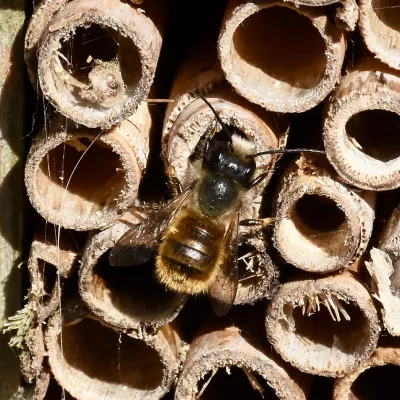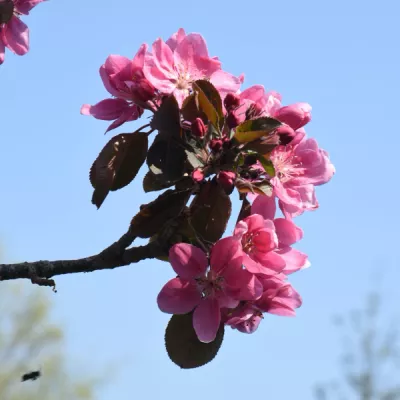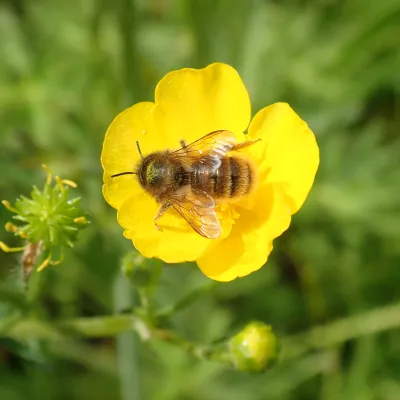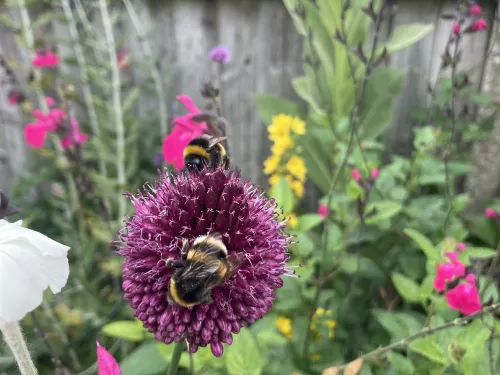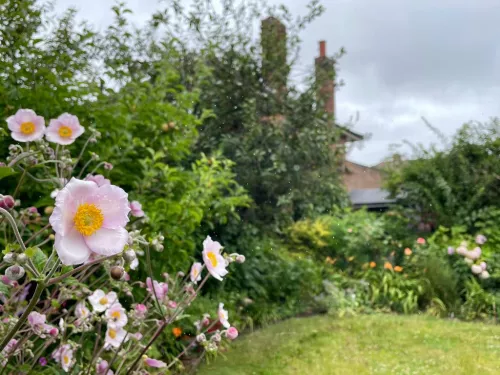We have several small bug homes rather than one large one. By providing a variety of potential nest sites, we can learn what is most popular with bees and other insects. Smaller bug homes will be less obvious to predators such as the greater spotted woodpecker. By dispersing the homes around the garden, we may also reduce the risk of parasites and disease.
The eggs and larvae need protection from the winter damp, so around October it’s advisable to remove the canes from the bug homes and put them in a cool, dry place, such as under an upturned flower pot in an unheated greenhouse. When they are ready to hatch in spring and early summer, they can fly towards the light coming through the hole in the base of the flower pot and find their way out into your garden. In March you can fill the bug homes with new canes and reposition them ready for the emerging females to lay some eggs.
Bees and other insects are more likely to thrive in your garden if you can provide plenty of pollen and nectar as well as bug homes for their eggs. In our next blog we will feature some plants that are good for pollinating insects and which, in our experience, also resist the voracious slugs that inhabit our garden.
Further information
National Insect Week starts this coming Monday 22nd June, so now's the perfect time to look out for bugs in your garden. To find out more visit: https://www.nationalinsectweek.co.uk/
Information on how to build a bee hotel can be found at: https://www.kentwildlifetrust.org.uk/actions/how-make-bee-hotel
